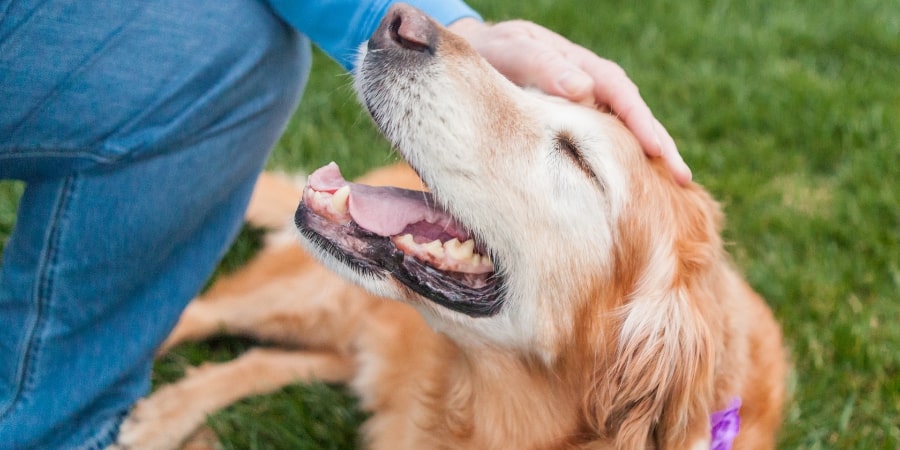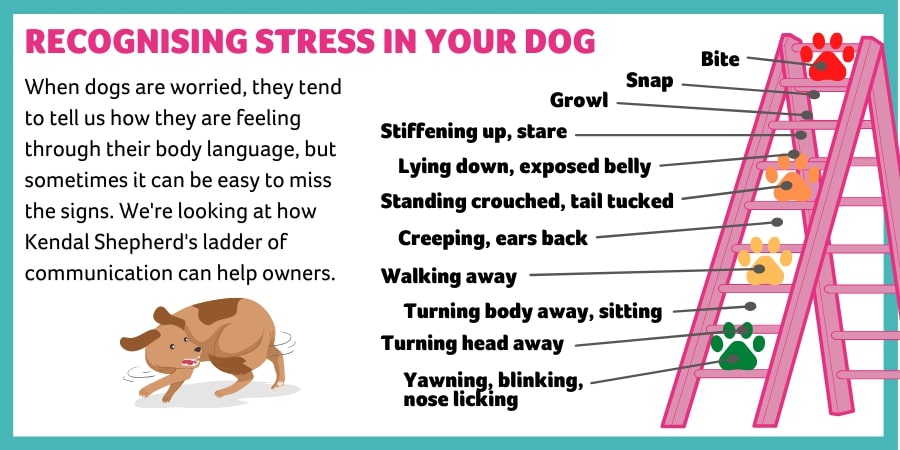Our 2021 PDSA PAW Report found that 15% of dogs who found homes during the lockdown are now showing signs of fear, and 11% are showing signs of aggression towards unfamiliar dogs – meaning the end of lockdown may not be welcomed with open paws!
As owners, knowing how to handle our pooches’ fear of other doggies can be tricky, but don’t worry because our vets are here to give you their advice!
Remember that not all dogs will enjoy making new friends
If your pup is nervous around other dogs, you may feel like you want to encourage them to interact as much as you can. However, the most important thing to remember is that you should never force them to interact if they don’t want to, as this will only build on their fear. Keeping a good distance away from other dogs while allowing them to be aware of one another should help your pup remain calm and unthreatened, resulting in a good experience.
Not every dog is highly social, and just like us, some may have a few select friends who they enjoy spending time with. Other pups just prefer the company of their humans, and that’s perfectly OK. If your dog is fearful and reactive, there’s nothing wrong with keeping your distance and avoiding new doggies if it helps your pup to feel happy and calm – after all, a happy dog makes a happy owner!

Steps you can take to help your dog feel less worried over time
While you can’t force your dog to like other dogs, it is possible to take some steps to help reduce any feelings of anxiety by using desensitisation and counterconditioning methods. You can gradually, and slowly, expose them to situations that make them feel nervous (desensitisation), while helping them become more comfortable by building up positive associations and changing how they feel about the situation (counterconditioning).
To help your pooch feel better about other dogs, you’ll need to help them associate meeting dogs with positive experiences by rewarding them with treats, or play.
Here are 3 simple steps that you can take to help desensitise your pup to doggy strangers:
- When you first start the process, it’s important that you keep your pup far enough away from other dogs so they’re not reacting and are remaining calm. When your pup is relaxed, reward their behaviour with a high value treat or toy – this will help create positive associations and change their mind-set about strange dogs.
- When this has been repeated lots of times and your dog is able to remain calm in the presence of another dog from a distance, you can try bringing them a little bit closer, constantly rewarding them to reinforce the positive association. Remember, if your dog starts to show any signs of stress, immediately create a bigger distance from the other dog and allow your pup to settle down. Doing this is important to ensuring that their fear doesn’t get worse.
- Repeat this process until they reach a comfortable distance – bringing it back a stage if they feel uncomfortable. The key to success is not to rush – be patient, take baby steps, and don’t be afraid to stop and try again another day if your pup appears worried.
Desensitising your dog won't change their behaviour instantly – in fact, it can take months, or even years. However, if it's done slowly, it can be very successful!
Know when your dog is feeling stressed
Finally, your dog will often give you many hints that they’re feeling uncomfortable. If you’re able to recognise them, you can remove your dog from the situation before they feel too anxious. Signs of stress may include:
- Blinking excessively
- Turning head away
- Yawning and licking their lips
- Low body posture
- Freezing
- Hiding away
- Cowering
- Flattening their ears and tucking their tail between their legs
- Avoiding other dogs
- Stiffening up and staring
- Growling and barking
- Snapping

Take a look at our anxiety relief collection to help calm nervous pups.
